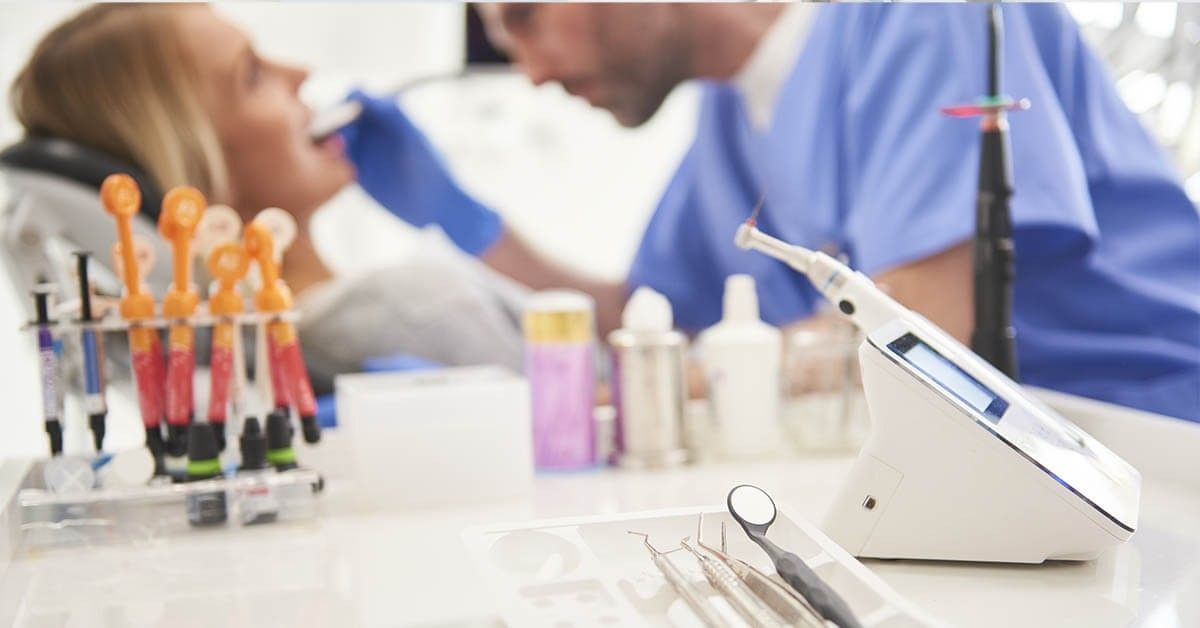Pre-orthodontic dental treatments: the most common dental procedures before orthodontics
You've finally decided to take the plunge and start orthodontic treatment, but during your initial consultation with an orthodontist, you're told you need some pre-treatment preparation.
Common pre-treatment measures before braces include tooth extraction, palate expanders, spacers, and anchorage devices to create the space needed for your teeth to move freely when straightening them.
These measures typically require one or more visits to your specialist before you start wearing braces or aligners.
We explore several common pre-treatment interventions and discuss why they might be needed, so you know what you might need before starting the process of improving your smile with orthodontics.
What is pre orthodontic treatment?
Pre-orthodontic treatments are dental procedures that patients may require before starting orthodontic treatment. After your consultation and diagnosis, your orthodontist will be in charge of indicating what treatments you’ll need.

Starting invisible orthodontic treatment
Orthodontia is a medical speciality that aims to improve both dental and general health. Only orthodontists are qualified and trained to create your dental treatment plan, as they are experts in our teeth. Additionally, to maintain your health and provide you with quality care, a precise medical protocol must be followed.
During your initial consultation, we will perform a series of dental tests and examinations to create your personalised dental treatment plan and ensure that invisible orthodontics are the right option to achieve a straighter smile.
First, our medical team will perform a panoramic and intra-oral x-ray to detect dental pathologies that can’t be seen with the naked eye. Next, we will take a 3D scan to create a digital impression of your teeth. As well as being much more accurate and pleasant than a plaster impression, it allows our team to create a customised plan and anticipate all your dental movements before you even start treatment.
The orthodontist may prescribe one or more dental treatments to be performed before you start wearing aligners.

Why are pre-orthodontic dental treatments so important?
As mentioned above, your doctor needs a healthy mouth structure to begin treatment. So a good diagnosis before starting to use orthodontics is essential. Starting orthodontic treatment takes time and is not a decision that should be entrusted to just anyone: it’s best to consult an expert who can guide and advise you.
Following the dental treatments as prescribed by your orthodontist not only ensures you achieve the agreed results from the 3D simulation, but it also guarantees that your teeth will remain healthy and intact throughout the duration of the process.
Not following the instructions given by professionals, whatever the type of dental treatment prescribed, can alter the results. Alternatively, you could get temporary results or no results at all, potentially causing teeth movement that require an additional orthodontic treatment in the future. Also, as we’ll touch on later, not correctly carrying out the pre-orthodontic protocol established by your orthodontist can put your health at risk.
Types of pre-orthodontic dental treatment
Although there are many dental treatments that can be necessary before starting orthodontics, here are the most common:
Hygiene appointments for a scale and polish
After receiving your orthodontic diagnosis, your dentist may begin your pre-orthodontic dental treatment plan by recommending a cleaning appointment. Dentists recommend brushing and flossing at least twice a day. However, this is not enough to keep teeth healthy. Some areas are still difficult to access and this is where plaque and bacteria can build up. This build-up eventually mineralises and turns into tartar.
Usually, scaling and polishing is recommended every 6 to 12 months. The treatment is quick and takes between 30 and 40 minutes. The risks of not having regular cleanings are many; in addition to bad breath, tartar can cause more serious gum problems that require more complex treatment. Your orthodontist should always recommend a cleaning before you start your orthodontics treatment.

Tooth decay treatment
Tooth decay is an infection that affects the enamel of the teeth and, if not treated in time, can affect the layer underneath or the pulp of the teeth. Among the most common dental treatments before starting to wear orthodontics, the dental filling. Fillings are done to correct cavities and are divided into two types:
- Simple fillings: a simple filling is one in which the caries, or tooth decays, affect the occlusal surface of the teeth (the part of the teeth used for chewing).
- Composite fillings: a composite filling is one that affects the proximal face of our teeth (the part where the teeth touch).
It is important to treat a cavity in time to avoid more serious problems; when it becomes deep, the tooth will have to be devitalised and a crown will have to be fitted. This is why your orthodontist will routinely recommend that you treat any and all cavities before starting your orthodontic treatment.
Periodontal chart
If your orthodontist detects periodontal disease during your first visit, they will need to treat it before beginning orthodontic treatment. They will create a periodontal chart to check if the periodontitis can be compatible with the use of orthodontics.
The periodontal chart is a document that notes the depth of the periodontal pockets. It’s extremely important to check this before starting any orthodontic treatment, especially if the patient shows signs of periodontitis. Periodontal charting makes it possible to detect the health status of the patient's gums and prevent the orthodontic treatment from failing.
Gingival curettage
A gingival curettage involves the removal of tartar between the gums and teeth. More invasive and time-consuming than simple scaling, it’s carried out in several stages to clean the tooth and requires regular check-ups with the dentist.
Dental extractions
Dental extractions are another of the most common dental treatments. If you suffer from severe crowding, your orthodontist may need to prepare your dentition by requesting the extraction of one or more teeth. Removing a tooth allows you to gain space to properly align the entire dentition properly. The procedure is performed in the operating room under general anaesthesia by a dental surgeon.
There are two types of extractions. First, we have simple extractions; these are the more straightforward of the treatments since they are the least difficult to remove. Then we have the complex extractions, which require a more complicated removal technique. In addition, if the wisdom teeth are not visible to the naked eye, an X-ray should be performed to determine their position and predict their development and whether or not they will influence orthodontic treatment.
Your orthodontist will probably prescribe that they be removed before treatment begins. Once the teeth are aligned, the wisdom teeth would no longer have enough room to grow in and could cause all of your teeth to shift, which would jeopardise the outcome of your orthodontic treatment.
X-rays: orthopantomography, periapical and TLRx
Before starting any pre-orthodontic treatment, it may also be necessary to perform a series of X-rays in order to know the position of the teeth as well as to detect caries or other pathologies. The types of X-rays include:
- Orthopantomography (OPG): This is a general x-ray of the entire mouth that is done at the initial consultation. Of the three, this is the only one that is performed on all patients - no exceptions. It is essential to detecting problems that may affect the use of orthodontics.
- Periapical X-rays: Periapical X-rays are those that are taken of only one or two teeth. They are basically used to detect caries and cavities.
- TLRx or Lateral Skull Teleradiography: This is performed in order to study the facial growth of people undergoing orthodontic treatment. This type of X-ray is more common for pre-braces treatment, rather than aligners.

Root canals
Endodontics, commonly known as a root canal, is a type of dental treatment that removes the dental nerve when it’s affected by deep cavities or as a result of an injury. There are several types of endodontics depending on the number of roots affected.
Fiber post placement
The placement of fiber posts is necessary when an endodontic procedure has been performed, contributing to the restoration of the tooth. The posts are placed inside the root tubes and provide support and firmness to the piece.
Crown placement
Also on the list of common types of dental treatments is the placement of crowns, which can be motivated by several factors.
- On the one hand, we can resort to the placement of a crown when the tooth has a crater that is too large after a cavity and performing a dental filling is not enough.
- On the other hand, after a root canal it is normal for the teeth to be weaker and so it can be necessary to place a crown.
- Lastly, after trauma, a crown can also be placed in order to restore the natural crown of the tooth.
Get a healthy and aligned smile with Impress
If you want to align your smile with the best professionals, get in touch with us. We will inform you about our orthodontic treatments and the pre-treatments available at your nearest Impress clinic.
You can make an appointment through our website, by phone or WhatsApp at +44 20 3808 1072.
Schedule a first consultation to find out about our prices and receive a personalised dental treatment plan. We’ll see you there!




